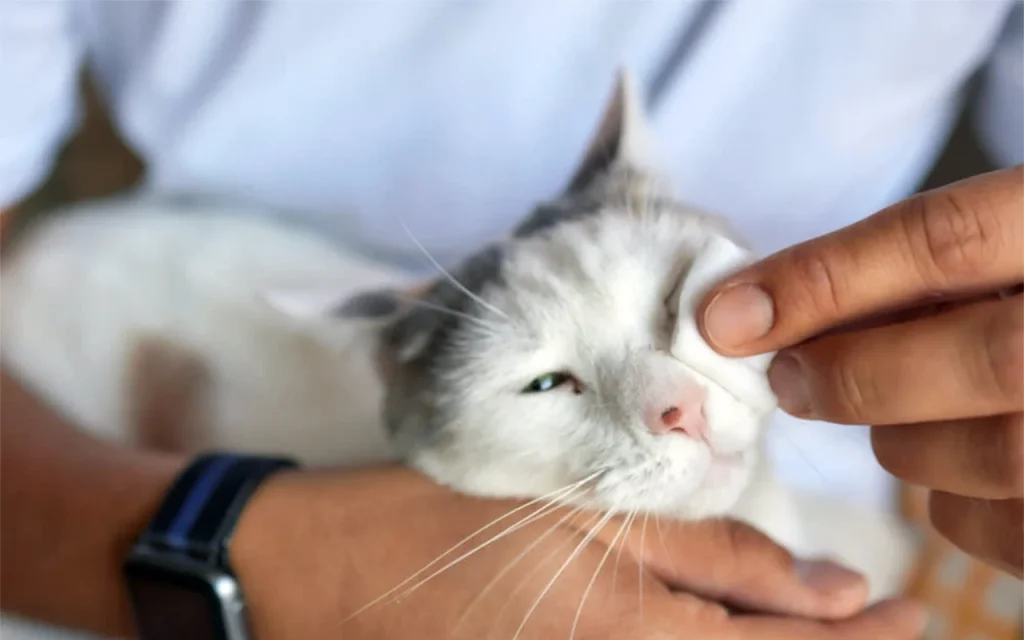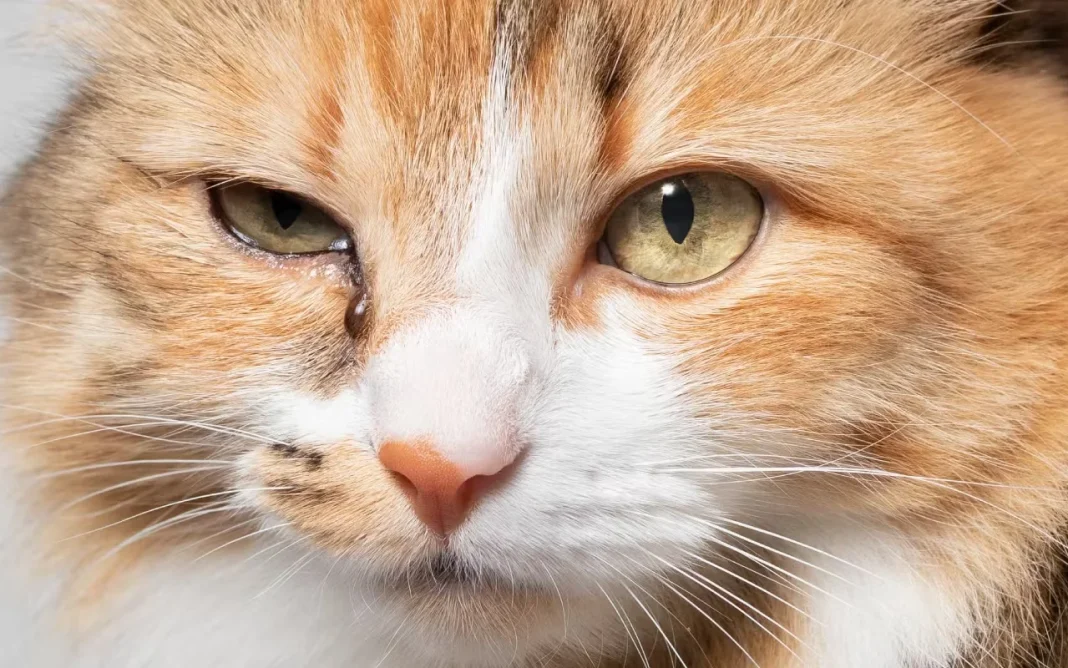You know your cat’s lovely eyes, right? Those beautiful peepers that can go from sleepy slits to wide-open wonder in a heartbeat. And sometimes, yep, you spot that little bit of gunk in the corner – the classic “eye booger.” We’ve all seen it! As a vet, I get asked about these little bits and bobs all the time. Is it a big deal? Is it just, you know, “sleep”? Or is it your cat’s way of saying, “Hey, something’s up with my eye!”
Honestly, it can be any of those. Sometimes, a tiny, dark, dry crusty that you find after your kitty’s had a big nap? That’s often just normal stuff – a bit of dried-up tear fluid, some dust, nothing to lose sleep over. Our eyes do it too, don’t they? And some cats, especially the adorable flat-faced ones like Persians, well, their tear ducts are just plumbed a bit differently, so they might always have a bit more watery overflow or those reddish-brown tear stains, and that can be their normal.
But then there are other times when what you’re seeing is a bit more of a clue. Let’s say the discharge suddenly looks different – maybe it’s yellow or green. Hmm, now my vet brain starts thinking “infection.” Or perhaps there’s just loads more of it than usual, or it’s super sticky and stringy. Those are the times we need to pay a bit more attention.
Often, if a cat’s got a bit of a cold – you know, one of those feline upper respiratory things, often caused by viruses like herpesvirus or calicivirus – their eyes can get all watery and then a bit gunky as part of the whole package. You might see sneezing and a runny nose too. It’s all connected, that head and nose and eye business! Sometimes, it’s what we call conjunctivitis, or “pink eye,” where the pinky bits around their eye get all red and sore-looking. That can be from those same viruses, or bacteria jumping in, or even an allergy flaring up if they’re sensitive to pollen or dust, just like us.
And speaking of things getting in their eye, ever had that awful feeling of an eyelash or a speck of grit in your own? Cats get that too! A tiny grass seed or a bit of fluff can cause a lot of irritation, making their eye water like crazy and look pretty sore. If they’re suddenly squinting hard, pawing at their eye, and it’s looking red and angry, that’s a big sign something’s not right in there and needs a look. It could even be a little scratch on the surface of their eye – a corneal ulcer – and those can be really painful and need proper treatment so they don’t get worse.

Now, if you just see a little normal crusty and you want to help your kitty look their best, how do you clean it? Gently, is the main word! I always tell people to grab a soft, clean cotton ball or a bit of lint-free cloth. Dampen it with some lukewarm water (best to boil it first and let it cool right down) or one of those sterile eyewash solutions you can get from your vet or a good pet store – but please, no human eye drops unless your vet has specifically said so, okay? Then, just very gently wipe away from the corner of the eye. Don’t go poking towards the eyeball itself. If a booger is really dried on, hold that damp cotton ball on it for a few seconds to soften it up first, then it should wipe away much more easily. And use a fresh bit for each eye, just in case there’s something brewing you don’t want to spread.

So, when do these little eye boogers go from “aww, sleepy kitty” to “hmm, maybe I should call the vet”? Well, if that discharge turns yellow or green, that’s usually my first “vet visit needed” flag – often means a bacterial infection is having a party. If there’s suddenly a lot more gunk than usual, or if it’s really thick and sticky, that’s another reason for a chat. And this is a big one: if your cat is holding their eye shut, squinting hard, or seems to be really rubbing or pawing at it, that spells P-A-I-N. Eye pain is always something we vets want to see sooner rather than later. Other things to watch for? Any obvious redness or swelling around the eye. If the clear part of their eye looks cloudy or you can see a mark on it. Or if it’s happening along with other signs that your cat just isn’t themselves – like they’re off their food, super sleepy, or sneezing up a storm. And definitely, if it’s a tiny kitten with gunky eyes, they need to be seen pretty quickly, as little ones can go downhill fast.
Honestly, you know your cat best. If something about their eyes just doesn’t seem right to you, or if you’re worried for any reason, it’s never, ever a bad idea to just get it checked out. Sometimes it’s nothing much, and we can set your mind at rest. Other times, catching a problem early can make all the difference in getting their beautiful eyes clear and comfortable again. We can do a proper eye exam, maybe use special stains to look for scratches, and figure out exactly what’s going on and what we need to do to help your little mate feel a whole lot better.






